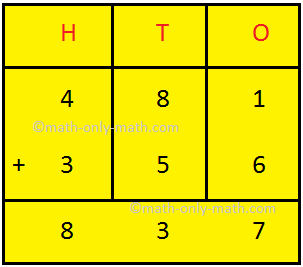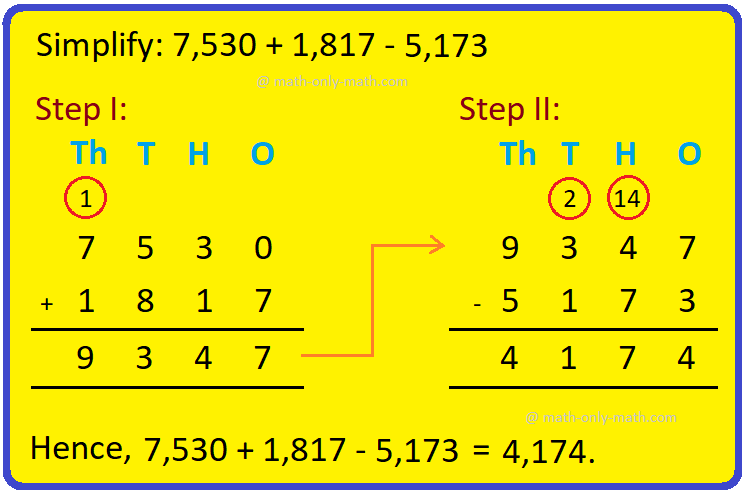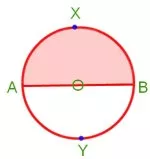Subscribe to our YouTube channel for the latest videos, updates, and tips.
Home | About Us | Contact Us | Privacy | Math Blog
Compound Interest when Interest is Compounded Half-Yearly
We will learn how to use the formula for calculating the compound interest when interest is compounded half-yearly.
Computation of compound interest by using growing principal becomes lengthy and complicated when the period is long. If the rate of interest is annual and the interest is compounded half-yearly (i.e., 6 months or, 2 times in a year) then the number of years (n) is doubled (i.e., made 2n) and the rate of annual interest (r) is halved (i.e., made r2). In such cases we use the following formula for compound interest when the interest is calculated half-yearly.
If the principal = P, rate of interest per unit time = r2%, number of units of time = 2n, the amount = A and the compound interest = CI
Then
A = P(1 + r2100)2n
Here, the rate percent is divided by 2 and the number of years is multiplied by 2
Therefore, CI = A - P = P{(1 + r2100)2n - 1}
Note:
A = P(1 + r2100)2n is the relation among the four quantities P, r, n and A.
Given any three of these, the fourth can be found from this formula.
CI = A - P = P{(1 + r2100)2n - 1} is the relation among the four quantities P, r, n and CI.
Given any three of these, the fourth can be found from this formula.
Word problems on compound interest when interest is compounded half-yearly:
1. Find the amount and the compound interest on $ 8,000 at 10 % per annum for 112 years if the interest is compounded half-yearly.
Solution:
Here, the interest is compounded half-yearly. So,
Principal (P) = $ 8,000
Number of years (n) = 112 × 2 = 32 × 2 = 3
Rate of interest compounded half-yearly (r) = 102% = 5%
Now, A = P (1 + r100)n
⟹ A = $ 8,000(1 + 5100)3
⟹ A = $ 8,000(1 + 120)3
⟹ A = $ 8,000 × (2120)3
⟹ A = $ 8,000 × 92618000
⟹ A = $ 9,261 and
Compound interest = Amount - Principal
= $ 9,261 - $ 8,000
= $ 1,261
Therefore, the amount is $ 9,261 and the compound interest is $ 1,261
2. Find the amount and the compound interest on $ 4,000 is 112 years at 10 % per annum compounded half-yearly.
Solution:
Here, the interest is compounded half-yearly. So,
Principal (P) = $ 4,000
Number of years (n) = 112 × 2 = 32 × 2 = 3
Rate of interest compounded half-yearly (r) = 102% = 5%
Now, A = P (1 + r100)n
⟹ A = $ 4,000(1 + 5100)3
⟹ A = $ 4,000(1 + 120)3
⟹ A = $ 4,000 × (2120)3
⟹ A = $ 4,000 × 92618000
⟹ A = $ 4,630.50 and
Compound interest = Amount - Principal
= $ 4,630.50 - $ 4,000
= $ 630.50
Therefore, the amount is $ 4,630.50 and the compound interest is $ 630.50
● Compound Interest
Compound Interest with Growing Principal
Compound Interest with Periodic Deductions
Compound Interest by Using Formula
Compound Interest when Interest is Compounded Yearly
Variable Rate of Compound Interest
Practice Test on Compound Interest
● Compound Interest - Worksheet
Worksheet on Compound Interest
Worksheet on Compound Interest with Growing Principal
Worksheet on Compound Interest with Periodic Deductions
8th Grade Math Practice
From Compound Interest when Interest is Compounded Half-Yearly to HOME PAGE
Didn't find what you were looking for? Or want to know more information about Math Only Math. Use this Google Search to find what you need.
Recent Articles
-
5th Grade Circle Worksheet | Free Worksheet with Answer |Practice Math
Jul 11, 25 02:14 PM
In 5th Grade Circle Worksheet you will get different types of questions on parts of a circle, relation between radius and diameter, interior of a circle, exterior of a circle and construction of circl… -
Construction of a Circle | Working Rules | Step-by-step Explanation |
Jul 09, 25 01:29 AM
Construction of a Circle when the length of its Radius is given. Working Rules | Step I: Open the compass such that its pointer be put on initial point (i.e. O) of ruler / scale and the pencil-end be… -
Combination of Addition and Subtraction | Mixed Addition & Subtraction
Jul 08, 25 02:32 PM
We will discuss here about the combination of addition and subtraction. The rules which can be used to solve the sums involving addition (+) and subtraction (-) together are: I: First add -
Addition & Subtraction Together |Combination of addition & subtraction
Jul 08, 25 02:23 PM
We will solve the different types of problems involving addition and subtraction together. To show the problem involving both addition and subtraction, we first group all the numbers with ‘+’ and… -
5th Grade Circle | Radius, Interior and Exterior of a Circle|Worksheet
Jul 08, 25 09:55 AM
A circle is the set of all those point in a plane whose distance from a fixed point remains constant. The fixed point is called the centre of the circle and the constant distance is known






New! Comments
Have your say about what you just read! Leave me a comment in the box below. Ask a Question or Answer a Question.